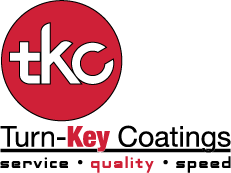Frequently Asked Questions About Metal Plating
There is no one best coating. The best coating is determined by your application, the functionality of the parts, and the base metal you are trying to coat. Some coatings, such as electroless nickel, are more durable in harsh environmental conditions. Gold plating provides superior conductivity in electrical circuits. If you only require products such as steel to have a warehouse shelf life then a zinc coating may be sufficient. Please discuss your application with us and we can help guide you to potential solutions for your particular application.
It depends on how much effort it takes to process your order and how complicated the tasks. Generally, we will take three to five full days to process your order not including the day it arrives at our processing facility.
Yes, we can break into our production schedule and put in extra hours to get a rush order to you. We pride ourselves in helping you be successful and in meeting critical deadlines. However, it does depend upon the complexity of the part and we do have to recoup our additional costs for breaking our production plan and incurring overtime labor costs.
The cost is determined by how much effort it takes to achieve a quality finish that meets functional specifications. We cannot give you a price without a drawing/print or seeing the actual part. The condition of the part is also important along with how intricate the design. Rust, blind holes, small holes, seams, welds, and multiple processes on the same part complicate achieving a quality finish. Also, where masking or special surface treatment (bead blasted or matte finishes for example) are required, or if additional polishing is requested it takes additional effort. Finally, used parts are very different from new fabrication and we would definitely need to see the used parts to be processed. We can provide a quote from a print or from digital pictures with measurements noted.
The size of the part is only one the variables that helps determine price. Two parts could be roughly the same size but have very different levels of effort to achieve quality coatings. For example, more intricate parts require special effort to achieve success. Also, any additional steps such as polishing or bead blasting will result in additional charges.
No. Certifications are a requirement for most of our customers so we do not charge any extra for them.
Coating thicknesses are typically called out in the design or print or a thickness may be stated on a purchase order for a particular part or application. In the absence of a drawing, we will use standard specifications to determine thicknesses for industrial applications or cosmetics in a decorative application. Thickness of a coating can be measured in a variety of ways but in the majority of cases we use x-ray fluorescence as this gives us a very precise measurement of plating thickness.
No. Many people mistakenly believe that pits, scratches, or other surface defects will be filled in by the plating or coating. In fact, any surface defect is likely to become more pronounced after coating.
Either old parts or newly fabricated parts can be coated. Generally, new parts are easier to coat than old parts. Older or used parts generally require additional cleaning and preparation prior to coating. Also, old parts will have defects such as scratches, dents, pits, etc. that will show up in the finished coating. Some defects may be removed with additional effort but would need to be discussed so the part is not affected dimensionally relative to your tolerances.
There is a minimum cost associated with the processing of your order. Those costs include our incoming inspection, documentation of your requirements and creating the resulting work order, staging your order in our production process, processing your part, quality inspection including thickness measurements as required, scheduling delivery of your order, and invoicing. Without a minimum charge, we are simply not able to recover these standard costs.
Our standard payment terms are net 30 days once your credit is established. New customers may require a credit card or check when the order is picked up until credit references are verified.
Normal hours are 8AM to 5PM Central Standard time but we are frequently here earlier and later than these hours. By special request, we can also schedule to be here outside of our regular hours but this would need to be discussed in advance.
No. Only aluminum can be anodized.
Anodizing changes the surface of aluminum by creating an oxide coating. While building the coating it is also structurally changing the surface of the material. In plating, we are adding additional metal onto an existing metal surface and not changing the surface of the base metal.
